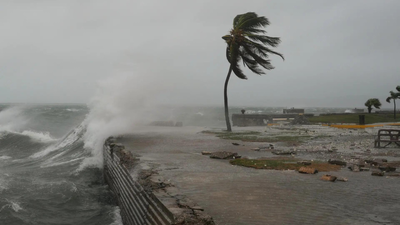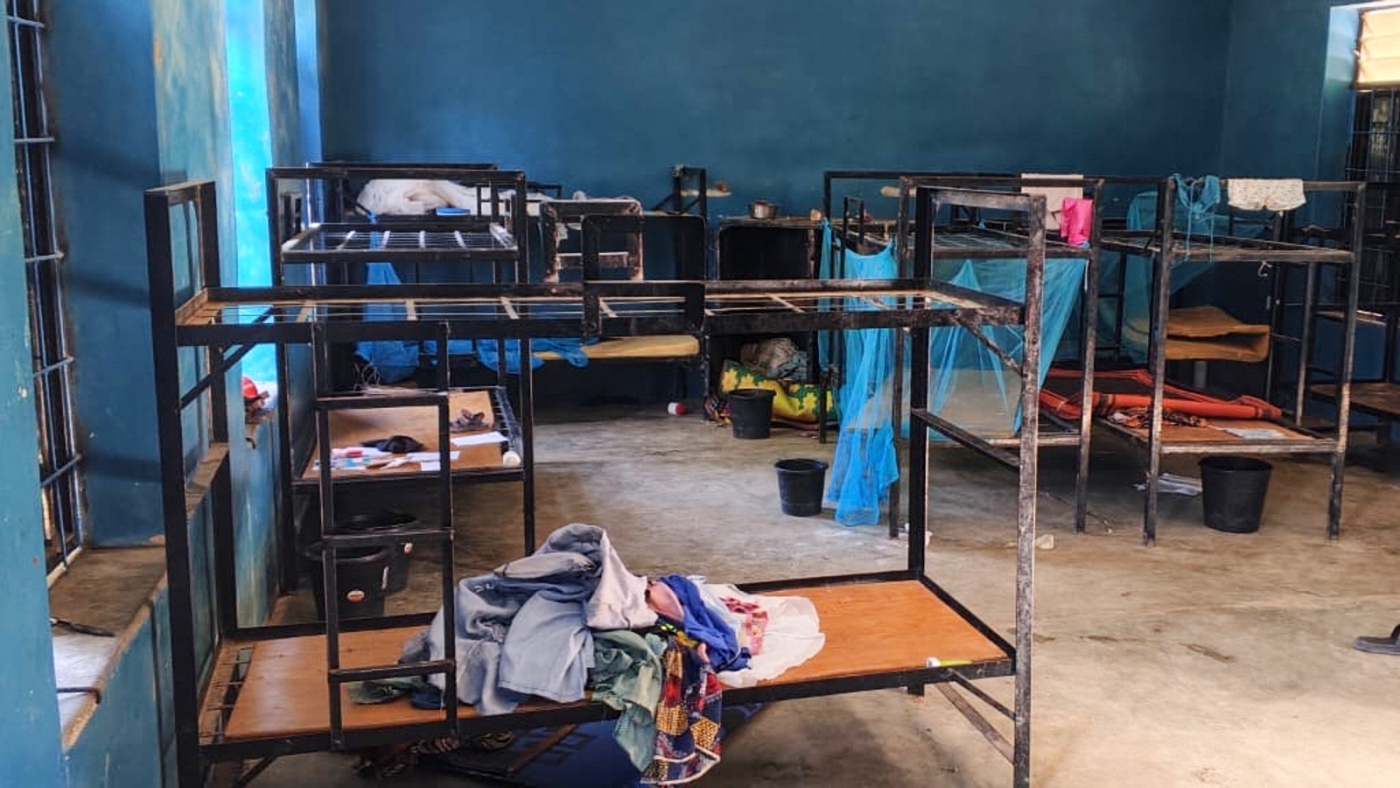
Hurricane Melissa, one of the strongest Atlantic hurricanes on record, has left a trail of destruction across Jamaica and is now heading north-northeast toward Cuba. The storm, which made landfall in Jamaica as a catastrophic Category 5 hurricane, brought winds of up to 185 mph (295 kph), massive flooding and landslides, and caused extensive damage to infrastructure.
Officials are warning that the recovery process will be slow, with thousands displaced and major hospitals damaged.Prime Minister Andrew Holness said the scale of devastation was unlike anything Jamaica had ever experienced. “There is no infrastructure in the region that can withstand a Category 5,” he said. “The question now is the speed of recovery. That’s the challenge.”As Melissa approaches Cuba, authorities have evacuated over 735,000 residents, bracing for destructive winds, torrential rain, and storm surges as high as 12 feet.
Cuban President Miguel Díaz-Canel Bermúdez has urged people to “be alert, show solidarity, and not forget discipline in the face of this threat.”
10 key points about Hurricane Melissa
Record-breaking storm slams Jamaica
Hurricane Melissa came ashore near New Hope, Jamaica, as a powerful Category 5 storm — tying records for the strongest Atlantic hurricane at landfall. With 185 mph winds and a central pressure of 892 millibars, Melissa equalled the intensity of the 1935 Labor Day hurricane and 2019’s Hurricane Dorian.
The storm ripped roofs off homes, uprooted trees, and sent boulders crashing down roads. Prime Minister Holness described the impact as “devastating,” noting widespread damage to hospitals, homes, and businesses.
Officials have confirmed at least three deaths in Jamaica, with many areas still unreachable due to blocked roads and flooding.
Cuba braces for impact: ‘May God have mercy on us’
In Santiago de Cuba and Holguín, residents are preparing for the storm’s arrival.
“May God have mercy on us, because it’s coming with a lot of strength,” said Diamon Mendoza, a local resident. Elderly citizens, families with children, and farmers have sought refuge in community shelters or the homes of neighbours. State television showed people securing livestock and crops ahead of the hurricane’s landfall, expected early Wednesday.
Tens of thousands displaced across Jamaica
More than 800 shelters were opened before Melissa’s arrival, housing about 15,000 people.
Many families remained stranded as floodwaters rose in western Jamaica, particularly in the parishes of St Elizabeth and Westmoreland. “Roofs were flying off,” said Desmond McKenzie, deputy chairman of Jamaica’s Disaster Risk Management Council. “We are hoping and praying that the situation will ease so that some attempt can be made to get to those persons.
” Roughly 540,000 customers, or 77% of the island, were left without power.
‘A beast of a storm’: Meteorologists stunned by intensity
Experts described Melissa’s behaviour as “extraordinary.” The storm underwent *extreme rapid intensification*, strengthening by about 70 mph in 24 hours — far exceeding typical expectations. “It’s been a remarkable, just a beast of a storm,” said hurricane researcher Phil Klotzbach of Colorado State University. Despite passing near Jamaica’s mountains, Melissa retained its power, fuelled by abnormally warm ocean waters — 2°C hotter than average.
Climate scientists said such superheated waters, driven by global warming, made the storm 500 to 700 times more likely to reach such strength.
Cuban evacuations on a massive scale
As Melissa bears down on eastern Cuba, more than 735,000 people have been evacuated, according to President Díaz-Canel. The government has focused on moving residents from coastal and mountainous regions, where flash floods and landslides pose major threats. In Holguín province alone, over 200,000 residents were relocated.
“It will be a very difficult night for all of Cuba, but we will recover,” the president said, urging citizens to remain disciplined and resilient.
Storm surge and flash flood warnings for Cuba
Meteorologists warn that Cuba’s southeastern coast could experience storm surges between 8 and 12 feet above normal tides, accompanied by large, destructive waves. Rainfall of 10 to 20 inches, with localised totals up to 25 inches in mountainous regions, could trigger catastrophic flash flooding.
CNN meteorologist Briana Waxman cautioned that Melissa’s clearer eye suggests it is reorganising — potentially regaining Category 4 strength just before landfall.
Families in the UK anxiously await news
Members of the Jamaican diaspora are desperately seeking updates from loved ones back home. Ambrosine Townsend, who lives in Kent, said she had been unable to contact her sister in Long Bay since Sunday afternoon. “Even though I trust her, I tried to persuade her to leave,” she said.
“Because I know that things can change.” Many families in the UK and US have faced days of silence as communications remain down across much of Jamaica.
Power outages and hospital evacuations in Jamaica
Several hospitals were severely damaged during the storm, forcing emergency evacuations. One major facility lost power entirely, and 75 patients had to be moved to safer locations. Emergency services struggled to operate amid the chaos, with communications cut and floodwaters blocking key routes.
“We have boats, helicopters, you name it,” said McKenzie. “The government is ready for rescues as soon as it’s safe.
”
Seven deaths across the Caribbean so far
At least seven people have died across the Caribbean, including three in Jamaica, three in Haiti, and one in the Dominican Republic, where another person remains missing. While Jamaica braces for a full damage assessment, officials fear the toll could rise as rescue teams reach isolated areas. UN agencies and NGOs have pre-positioned food, medicine, and relief supplies to support recovery efforts once conditions allow.
Scientists link intensification to climate change
Meteorologists say Melissa’s power underscores a troubling trend. Thirteen Category 5 storms have formed in the Atlantic since 2016 — more than any other 10-year period in recorded history. “We’re seeing a direct connection between warmer waters and rapid intensification,” said Bernadette Woods Placky, chief meteorologist for Climate Central. “When these storms go over extremely warm water, it is more fuel for them to explode.
”(With inputs from agencies)

 1 month ago
21
1 month ago
21










 English (US) ·
English (US) ·